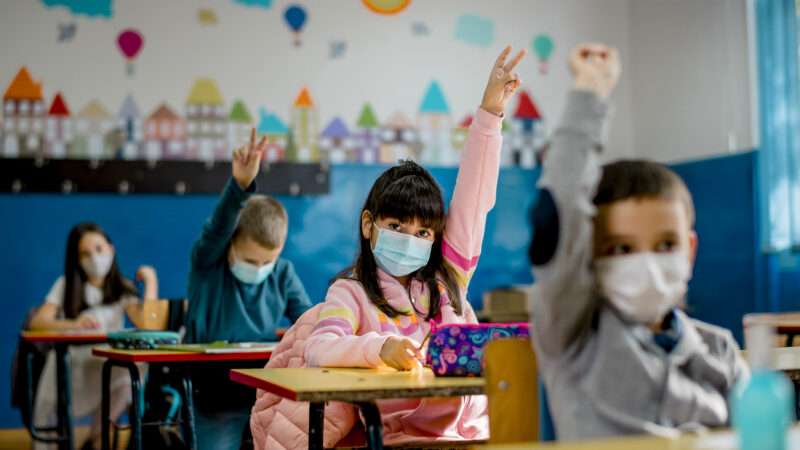
For many men serving time for committing sex offenses in Texas, their prison term never really ends—even if they complete their sentence. That’s because they’re required to enter a live-in mental health facility before returning to society.
That facility—in Littlefield, Texas—is actually a former maximum security prison in the middle of a dirt field.
“It comes as a surprise,” says Mary Sue Molnar, founder of Texas Voices for Reason and Justice, a nonprofit dedicated to reforming the state’s sex offense laws and registry. “I often get letters from prison saying, ‘Oh my god, they’re going to civil commit me. What should I do?'”
Civil commitment is the practice of keeping people locked up past their release date, on the grounds that they are so dangerous they need therapy—years and years of it—before they can safely return to society.
Of course, Molnar notes, if the state really “wanted them to have treatment and counseling, they had plenty of time to get that done. In some cases, these men served 20 to 25 years” in an ordinary prison before being civilly committed.
This might seem just. But even as we feel great anger and sorrow on behalf of sex crime victims, we can also see that civil commitment is an extra prison sentence by another name.
Originally called clients or residents when the center opened in 2015, the men have been re-labeled “inmates” since Management and Training Corporation, a private prison company, took over in 2019.
“MTC does not run it in a therapeutic manner whatsoever,” says Mandi Harner, a former security officer at the facility who was fired for having a relationship with one of the residents. “They run it like a prison. I’m not going to tell you everyone in there is an angel. But there are some men who deserve treatment they’re not getting, and also some who did things as teenagers who don’t deserve to be there their whole lives.”
For their first year or two at the treatment facility, the men are required to wear electronic ankle monitors that they have to pay for, according to Harner. MTC declined a request for comment about this and other claims made by sources in this article, as did the Texas Civil Commitment Office (TCCO), the government agency that oversees the facility.
There is only one way to get out of Littlefield: The men must work their way up through four tiers of treatment before they are allowed to petition for their freedom.
The therapeutic techniques sound hodge-podge. The inmates “have to admit to all of their offenses and share it with the group,” said one of the founders of Texans Against Civil Commitment (TACC), a former Littlefield therapist who writes under the name ‘Murphy’ and who claims to have been fired for not seeing “eye to eye” with management. “And they have to keep a masturbation log so the therapist knows how often they’re masturbating and what they’re masturbating about. So she knows whether it’s healthy or whether it’s deviant.” The men must also record whether or not they climaxed. These logs are read aloud in group therapy.
The prison also employs polygraphs and penile plethysmography, measuring changes to the circumference or volume of the penis as the men watch and listen to different stimuli.
When an inmate moves up a tier, which can take a year, he can find himself demoted for many reasons, including very small infractions. One man who had been at Littlefield for years and made it through all four tiers was finally about to get his release hearing. But he did something wrong—rumor had it he swore at a guard—and was knocked back down to tier 1, where he would have to start anew, according to Murphy.
He went to his cell and hanged himself.
A former Littlefield guard I’ll call Frank—who says he quit but wants to stay in corrections and fears retaliation—said this wasn’t the only tragedy he had witnessed there. Another man, he said, castrated himself.
Frank estimates about 15 percent of the men are intellectually challenged, so they will never be able to successfully complete the therapy, because they don’t understand it.
The average age of inmates is 58, says Murphy. “But there are several 80-year-old men. There are several blind men, several that use walkers and wheelchairs.” That’s because almost no one ever manages to complete the therapy, according to a 2015 study.
During the height of the COVID-19 pandemic, when the men were locked two to a cell for 23 hours a day for several months, nine men out of about 300 died.
“We were to go with them to the hospital—two officers per resident—and you would just stare at them while on ventilators and get paid for it,” says Harner. “And when they knew they were dying, they weren’t even allowed to call their mom or dad because TCCO said you can’t.”
Until recently, inmates also had to pay a 33 percent tax on any packages they got, further isolating them from any support system they might have on the outside. For instance, if family members sent a pair of jeans and three boxes of Chips Ahoy, they would have to document what it cost and pay another 33 percent to the prison.
“One of our members during COVID-19 sent her son a package of masks and they were valued at $20,” says Molnar. “She had to pay 33 percent on top of that to send him those masks.”
That rule was just changed, most likely as a result of pressure from TACC. Now prisoners have to pay a 25 percent fee on any money sent to them from someone other than their spouse, according to Molnar.
Civil commitment rests on the mistaken belief that people who committed sex offenses are incorrigible—despite very low recidivism rates. What’s more, no one who serves time for a sex crime enters the community unsupervised after their prison term. They remain under strict supervision for years, sometimes for life, on probation, parole, and often the Sex Offense Registry.
Civil commitment is by no means confined to Texas, and Littlefield’s status as a privately operated facility is hardly the main issue. The problem is bad laws, as well as court decisions that have upheld them: More than 6,000 people are confined under civil commitment in 21 states. While the Fifth and 14th Amendments to the U.S. Constitution prohibit double jeopardy, the Supreme Court has ruled that it is acceptable to effectively imprison sex offenders a second time—not for the crimes they committed, but for future crimes they might commit.
Recently, about 40 men at a civil commitment facility in Minnesota went on a hunger strike to protest “an indefinite detention program” they consider “an unconstitutional death sentence.” Since Minnesota first began civil commitment in 1994, processing hundreds of men, it has granted only 14 full discharges and 45 provisional discharges.
Meanwhile, back in Texas, Littlefield has become a human “storage facility,” says Frank.
from Latest – Reason.com https://ift.tt/3fYwhoT
via IFTTT




